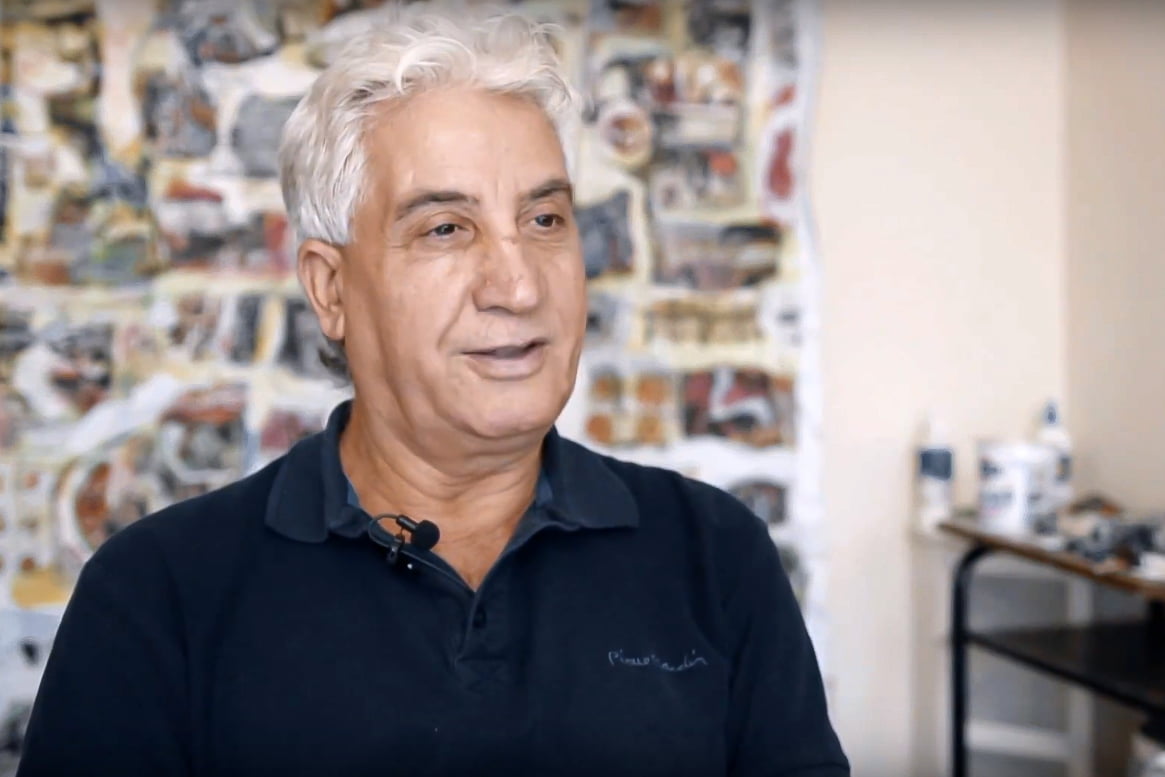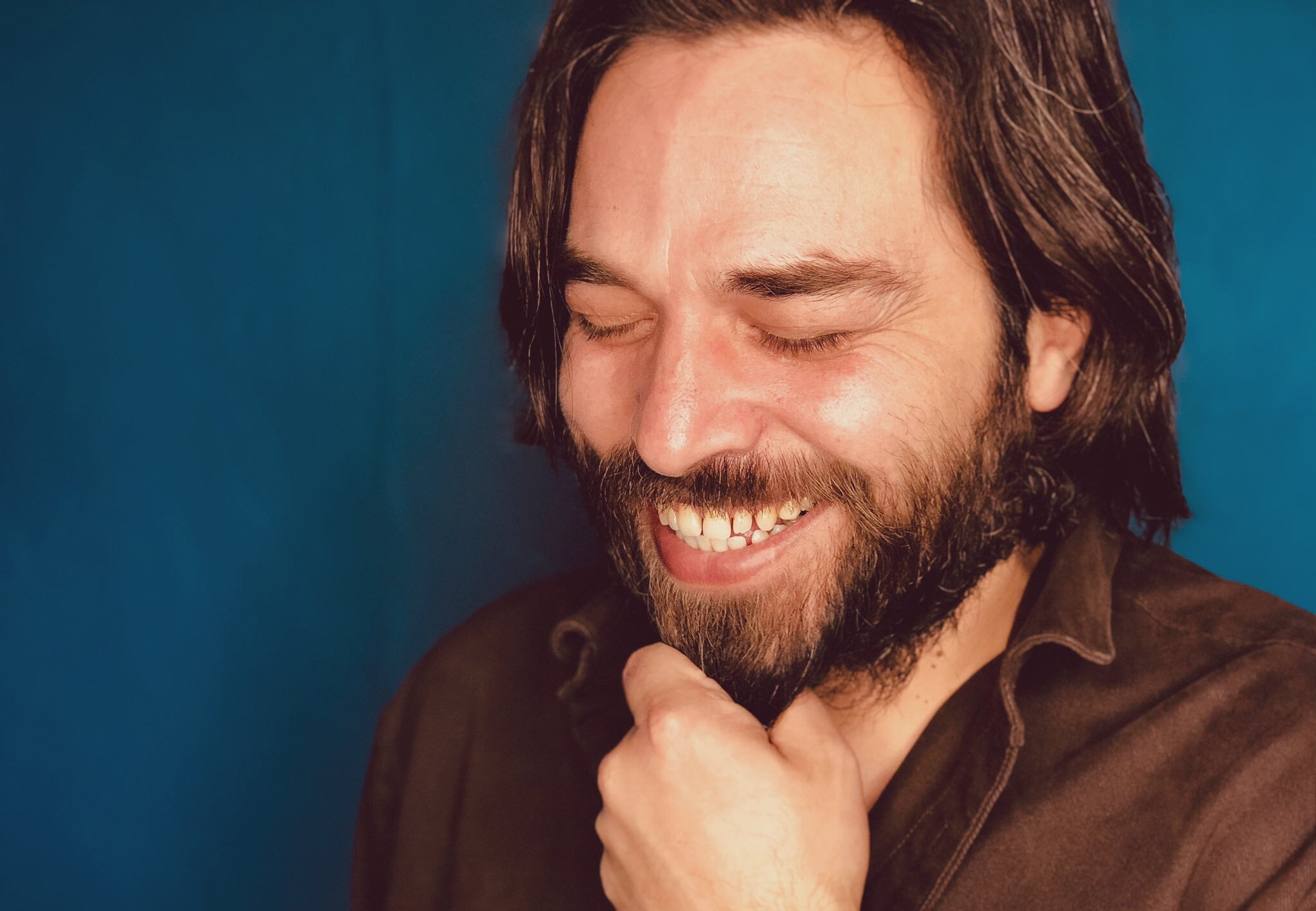In what ways can our understanding of the heritage of an area help in rebuilding it? What role does the suspended bridge of Deir Ezzor play in the culture and consciousness of the city?
Syria is distinguished by its great cultural diversity. It is the vessel that contains an ancient heritage with a specificity that uniquely identifies it. This cultural heritage has been facing existential dangers during the last ten years. I describe heritage as a being with a shape, sense of sound and smell, who lives in the conscience, has a history and memories, and has an identity like any other Syrian.
To be able to reconstruct a destroyed heritage, we must be fully aware of all the architectural, artistic, constructional, historical, social and technical details of this heritage. All these aspects go hand in hand. Work in archaeological buildings is determined by the special study of the building as it was before and after the damage. The international conventions concerned with restoration work refer to the foundations of this process. However, technical and detailed executive studies must be drawn for each project separately.

One needs to bear in mind that the restoration and reconstruction works do not have fixed templates, ready formulas, or specific methods that apply to different cases. Every project must be studied as a case with its own specificity, independence and details based on the foundations and methodology of work in this field, and in the reconstruction of Syrian heritage.
As for a suspension bridge, it is the memory and identity of the Euphrates and the symbol of Deir Ezzor. Despite it being a recent construction, it has features that made the people of the region feel attached to it. Not only does this bridge provide a link between the banks of the Levantine and the Jazeera, it also connects the memories of the locals to the events that passed through it. There is a tradition in the region by which most newlywed couples cross this bridge, thus beginning their married lives. This is a turning event that they start in honour of a new life, as they call it, and a ritual associated with the Euphrates mixed with a lot of romance.
The heritage is enriched and influenced by the architectural style of the bridge. The French engineer, Monsieur Vivo, was influenced architecturally by the arches of the old markets built in 1864, to make each pillar three arches, according to a unique pattern that links the past to the present. Turning 10 km. to the west, you will find yourself in a completely different environment and culture from that in the Euphrates.
For people of Deir Ezzor, the suspension bridge is also a symbol of “resistance” when the French wanted to blow it up. It is a “tall building” with its columns visible from long distances, a link between two banks as it is a link between two lovers. It is also French influence that imprinted the area with its icon and contributed to the consolidation of its local heritage. All that history made rebuilding the bridge a duty that locals have to fulfill, out of gratitude and also to preserve a part of the region’s history.
How did you get interested in archeology? Where and how were you trained?
I consider myself lucky to have grown up in an environment that loves heritage. My father, the late Ahmed Chouhan, is a historian and researcher who wrote 107 books on history, archeology and the region’s heritage, and this love influenced me. I chose the College of Arts and Humanities, department of archeology, at the University of Damascus because it is one of the best options for higher education. Despite my preference for history and geography, archeology provided me with two desires in the field of excavations and archaeological surveys. My studies began in 1994, and I then worked on joint Syrian-foreign archaeological projects. I worked as a trainee at Bab Al-Faraj in Aleppo in 1995, and Ras Ibn Hani in Lattakia for two seasons. Upon graduation I worked at the Ashara site (Tarqa). There, I was employed at the Department of Antiquities of Deir Ezzor and represented the General Directorate of Antiquities and Museums at Sukkar Al-Ahimer and Tal Al-Sheikh Hamad. After that, I worked as the head of the Syrian team in the joint Syrian-French archaeological mission working in Dura Europos for five excavation seasons, as well as being the head of the Syrian side in the Syrian-French archaeological mission. The team worked at the Halabiya site “Zenobia” three seasons. Also, I worked as a head of the national mission in Tal Al-Qasabi, as well as at Al-Rahba Castle in Al-Mayadeen for five excavation seasons, and head of the Archaeological Excavations Division, and Assistant Secretary of the Deir Ezzor National Museum.

How can technology be better utilized in the future to protect cultural sites in the region?
Owing to advances in technology, the classical work in field excavations is no longer feasible. We can say that the era of the archaeologist who wears a hat and smokes a pipe then sends pieces from antiquity to his country has ended. I believe that the projects that will be proposed in the reconstruction phase will have an abundant share of antiquities in the region. During these ten years of the war in Syria, knowledge in this field has significantly declined among many archaeologists as a result of not working in archaeological sites and not being up to date on the advancement in this field. Besides, there are modern techniques in the field of preserving antiquities, such as documentation or chemicals in maintenance and stone processing, electronic documentation or 3D camera imaging, and even using secret water, which helps in tracking artifacts smuggled outside the country by using monitoring techniques by satellite, and photographing the sites through remote sensing, and following up on every change and attack on them, etc. All of these greatly contribute to reducing the violations of archaeological sites. In addition, many other techniques have been employed in documenting archaeological sites and architectural monuments, which allow rebuilding the destroyed parts of the sites. Some modern technologies such as museum protection programs, self-locking, early warning devices, theft and automatic extinguishing all work to ensure better protection for artifacts.
The river Euphrates -known as Furat in Arabic-, embeds very ancient cultural heritage connected with the history of the Mesopotamian region known as the Fertile Crescent. This heritage is in danger of disappearing. What do you suggest we could do to value this intangible heritage as part of our common heritage?
This region is rich in knowledge and applied science. Despite many ambitious attempts to revive the culture associated with intangible heritage, it was not at the required level compared to as Egypt and Saudi Arabia. Perhaps the most important aspect that can be done is to provide an appropriate climate for acquiring knowledge through available learning methods. Also focusing on this heritage within the curricula as a main subject for understanding and preserving heritage, networking among researchers, providing information through reliable main sources and providing material support through institutions that sponsor this. It is crucial to focus on the research aspect, publishing the results of research and studies at the local and international levels, and presenting the Syrian and Rafidi heritage alike as a product of a single human cultural heritage away from sectarian and ethnic tensions. Additionally, it is important to disseminate and deepen knowledge of the Fourati heritage or scientific research that is characterized by creative ideas, interactive dialogue, and studies that serve the region and systematically introduce them. In spite of the attempts to document intangible heritage, the last of which was in 2013, these projects need constant updating, and if this were to be done, we would have within a few years a heritage treasure that is comparable in its diversity to any other region of the world.

Image credits: Bertramz, used under CC BY-SA 3.0 / Wikimedia Commons
If we look at the Euphrates, we find that a great civilization was established there and we still lean on the texts of ancient civilizations and live by the glories of the past. Many peoples have witnessed their rise and fall here, many great battles took place on the banks of the Euphrates and many civilizations have left us Myths, beliefs, and etiquette.
Having worked with foreign archaeological missions, how does what they bring to the table compare to what is offered by local experts?
The Syrian Archaeological School is a relatively new school compared to the foreign schools who are leading in the field. Orientalists are fascinated by the East and its ruins. The Syrian archaeological cadre had its beginning in 1994 with the establishment of the Department of Archeology in the Faculty of Arts at the University of Damascus. Syrian archaeologists always strive to form an archaeological entity that is a mixture of several schools through which they extract the best experiences and techniques. In my opinion, archaeological work is based on a mixture of all human sciences in one field, which is what you live through during that period in which you are working on an excavation. I admit that there is a great failure in the presentation, especially since it is necessary to present the archaeological work and research in its simplest forms because the recipient aspires to live the experience of the archaeologist in its details.
Perhaps the most important aspect that can be done is to provide an appropriate climate for acquiring knowledge through available learning methods.
Tell us about intangible heritage, being orally communicated in nature, how can we educate the youth who live abroad about it?
Many who are not familiar with the intangible heritage consider it a source of backwardness that is on the verge of extinction due to the emergence of many more modern means and tools. However, during the Syrian crisis, the Syrian became more attached to heritage, because it naturally expresses identity. We find the younger generation singing about the Nile and remembering Tanour bread and Baladi cheese, and using it in their conversations and compliments, proverbs and popular poetry. It is a living proof that one cannot part with this heritage.
However, heritage is in a state of alienation as well, and the generation must be introduced to more accurate and original details in the arts and traditions of performances, such as tapping the tambourine, the dancing of grace, and popular games such as sword and gear, etc., or social practices, rituals and celebrations, such as festive rituals, culinary arts, reconciliation celebrations, and tanning. Such knowledge and practices relate to nature and the universe, such as the symbolism of fire in the region of Jazeera, clay architecture, perfumery, etc., or traditions and oral expressions as a medium for expressing heritage, such as reproach, Bedouin poetry and lamentations, with the exception of skills related to traditional craftsmanship such as rug making, Dalal coffee making and silversmithing.
It is possible to educate the younger generation by attracting them to heritage activities that constitute the identity of the country to which they belong. Forums, theater houses and heritage festivals in Europe may allow the younger generation to be aware of the specificity and distinction of this heritage. In addition, food also plays a role, and they can introduce the Syrian cuisine in Europe. Furthermore, it is important to make friends through cultural associations and centers that work to preserve cultural identity. I dream of establishing a center for the Syrian Euphrates heritage and publishing studies on the Middle Euphrates Valley region, inside or outside Syria, to revive this heritage rich in all its details.
Are there any significant female figures related to the cultural heritage of the Euphrates region? Who and why?
The Euphratean woman is a heritage treasure. Her whole life is linked to the details of this legacy. So we find among the Euphratean women those who preserved the weeping traditions and lamentations of the dead, such as the Qasuda Khurmat al-Suleiman originating in the middle of the nineteenth century, whose poems documented the rituals of mourning the dead and much of the reality of the Euphrates life in that period. Women played vital roles in preserving the heritage. For example, we have Labiba al-Dakhil, Maria al-Sabbagh, Mohsen al-Ayyash and Tamadur al-Mouh, whose popular poetry was able to preserve the authentic Euphratean character.
Would you consider cuisine as part of the cultural heritage? How in your opinion can the cuisine of the Euphrates area be better recognized and appreciated in Syria and beyond on par with the cuisines of Aleppo and Damascus?
The cuisine is considered one of the most important parts of the cultural heritage. This is due to the fact that it is associated with many rituals, especially the cuisine of the Euphrates region. For example, the Fora or Siali dish is a winter meal that is usually eaten on Fridays and friends are invited over. Or Thrud Okra, which is considered a symbol of the Deir Ezzor cuisine. Apart from that all kinds of types of home-made jams form part of this heritage.
Euphratean cuisine did not get an opportunity to be discovered. It is no less diverse than the rest of the Syrian cuisine. Despite its originality dating back more than three thousand years, it is also a mixture of what the food culture holds in the Syrian island or the Turkish and Iraqi cuisines. So, we are facing a long tradition in gastronomy, diversity, and culinary arts, and therefore it is easy to introduce it in Syria or abroad through a program that provides recipes and ingredients of traditional Euphrates cooking. I have seen during my work with many foreign archaeological expeditions that the Westerners tend to explore Euphrates food in a desire to break the routine of food, which depends mostly on fast food.
For many thousands of years, the region has been inhabited by the Bedouin community, a society of nomadic tribes. Apart from the ancient tradition of Oral Storytelling, The Hakawati, Bedouin heritage has largely been ignored and undervalued; what is your view on this?
The region, and Syria in particular, has become less interested in maintaining the Bedouin heritage, compared to the Gulf countries, for example. This heritage has not been entrenched in the minds of young people. Adding to that, the loss of heritage is directly related to catching up with urban, technical and linguistic developments at the expense of originality
The Bedouin heritage is closely related to the history of the Arab region as a whole and does not recognize its current modern borders. It is a transnational heritage that spreads and disseminates its originality, poems, traditions and distinction.

Image credits: Ed Brambley, used under CC BY-SA 2.0
This cultural depth goes back to more than five thousand years, but recently the authority’s approach to settling Bedouins has taken a different direction. Bedouin culture is gradually dissolving in the face of civil development. Consequently, some societies bid farewell to the Bedouin life in a manner that resembles a social upheaval, and others preserved it or the little of what remains of this heritage. The media plays the biggest role in the absence of this important aspect of the Syrian heritage, especially during the last ten years, where we find a decline in the presentation of drama, which were to some extent documenting the Bedouin lifestyle. I find that ignoring this heritage is a dangerous step aimed at eliminating or excluding this heritage in an effort to eliminate the tribal interconnectedness that characterizes the Bedouins and transcends borders. In addition, the Bedouin heritage is linked to tangible and tangible elements, yet it faces danger of being eliminated.
The preservation of Bedouin culture varies. For example, we find that the Bedouins adhere to the traditions of the Bedouin wedding even if they become urbanites, and at the same time, this tradition remains sustainable to the extent that they respect their own traditions. At the same, Bedouins differ in their passion for civic life and in their preparedness to ignore their traditions and assimilate.
How do you feel about the current state of Arabic calligraphy as a form of expression and art in Deir EzZor?
Arabic calligraphy was and still is one of the most important forms of artistic expression in Deir Ezzor. Although Arabic calligraphy entered the field of abstract art, it began to shift away from the originality and lose it little by little, after the computer programs contributed to losing its original Arabic flavor. Deir Ezzor was famous for its great calligraphers on an international level, such as Muhammad al-Qadi, Ubaida al-Banki, Mahmoud Hassan, and Walid Alloush, who was my teacher. There are also calligraphers who mixed abstract art with the Arabic script. Thus, the paintings were rich in color, beautifully shaped, and highly original. From the perspective of those artists those paintings are more liberated from the strict rules of calligraphy.
What books and documentaries would you recommend to those who want to learn about the unique culture, heritage, and arts of the area?
The region of the Middle Euphrates Valley has been studied by influential researchers, such as the late Abdul Qadir Ayyash and Ahmed Shuhan. These two researchers left a great impact, such as the magazine “Voice of the Euphrates” that talks about the region of the Middle Euphrates Valley and its customs and traditions. Their books like the History of Deir Ezzor, The Euphrates Flags, and other heritage books. Also, the book of the Ghannama Clans by Henry Charles. As for the documentaries that talk about the region’s heritage, they are few. What we need is a new approach in short documentaries. I think that the spontaneous documentation in sound and image is more interactive and intimate than the film material prepared for it.




